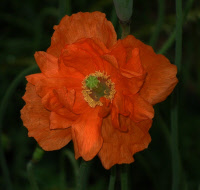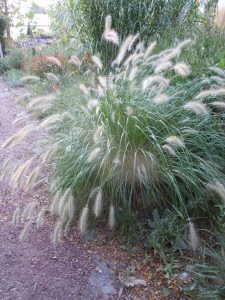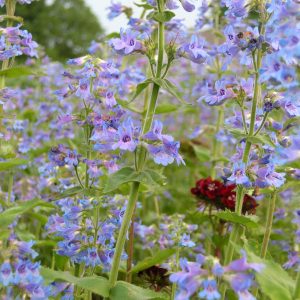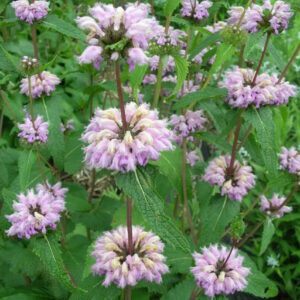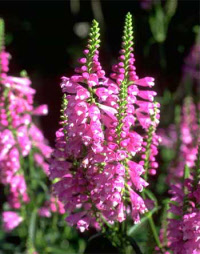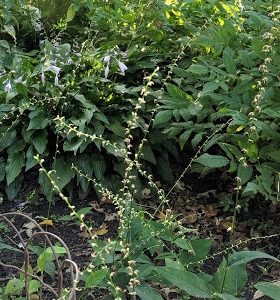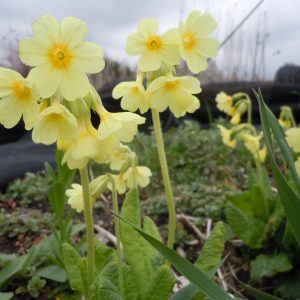Deer Resistant Plants
Showing 105–112 of 155 results
-
Papaver orientale Poppy Z 2-7
The classic poppy - papery tabasco petals with black blotch center in June. D.M. Ferry Catalog, 1876:"great beauty and magnificent.” It dies back in summer then the leaves reappear in fall.
OUT OF STOCK
Available for purchase in Spring only
The classic poppy – papery tabasco petals with black blotch center in June. D.M. Ferry Catalog, 1876: ”great beauty and magnificent.” It dies back in summer then the leaves reappear in fall.
Size: 2-3’ x 2’
Care: Full sun in well-drained soil. Drought tolerant
Native: Caucasus
Wildlife Value: Deer resistant.Poppies have been grown since at least the time when Homer wrote the Illiad, in which he used the poppy’s hanging bud as a metaphor for a dying soldier. During World War I, Canadian soldier John McCrae again united the poppy with dying soldiers. He wrote “In Flanders’ Field.” French botanist Joseph Pitton Tournefort (1656-1708) discovered this in Armenia in 1714 and sent it to the Jardin du Roi. Tournefort wrote “the Turks eat the green heads of this Poppy, although they are very bitter and acrid.” In 1741 Englishman Peter Collinson sent seeds to John Bartram (1699-1777) who cultivated the plant in his Philadelphia nursery. Jefferson grew the oriental poppy at Monticello and Washington grew it at Mount Vernon.
-
Papaver rupifragum Spanish poppy Z 5-9
Crinkled, crepe-paper like apricot petals all summer & fall except for a recess in the heat of mid-summer.
Crinkled, crepe-paper like apricot petals all summer & fall except for a recess in the heat of mid-summer
Size: 12-18" x 8"
Care: sun in well-drained to moist well-drained soil. Deer resistant, drought tolerant
Native: Spain, Asia Minor & CaucasusFirst described in Journal of Botany in 1873. Louise Beebe Wilder considered this among her favorite perennials. (1918). One of our favorites too! Gertrude Jekyll, mother of the mixed perennial border planted this for its “rich apricot color.” (1908).
-
Pennisetum orientale Oriental fountain grass Z 5-10
Showy, white to pinkish inflorescences summer thru fall.
Showy, white to pinkish inflorescences summer thru fall. Richard Darke, grass guru, describes this as “One of the most striking hardy fountain grasses. Low growing, compact and exceptionally floriferous … Blooms over an unusually long period from late June through October”
Size: 2' x 2'
Care: sun in well-drained soil or moist well-drained soil. Deer resistant and drought tolerant.
Native: central & SW Asia
Awards: Elisabeth Carey Miller Botanical Garden Great Plant PicksThe plant is named for its soft inflorescences; Latin penna and seta mean feather-bristle. This species collected before 1821.
-
Penstemon ovatus Beardtongue Z 4-9
Cornflower blue trumpets encircle spike in June, one of our favorites.
OUT OF STOCK
Cornflower blue trumpets encircle spike in June, one of our favorites.
Size: 2’ x 8”
Care: Full sun in well-drained soil
Native: Pacific Northwest
Wildlife Value: attracts Baltimore butterfly, bees, bumblebees, flies, wasps and hummingbirds.Penstemon is named for its five stamens, penta meaning five in Greek. Penstemons. Ovatus means oval, shaped like an egg, with the narrower end up, referring to the foliage. This species first collected by Scottish plant hunter David Douglas (1799-1834) and introduced in 1826.
-
Phlomis tuberosa syn. Phlomoides tuberosa Jerusalem sage Z 5-8
Whorls of bubblegum pink, beak-shaped flowers encircle the stem in July.
OUT OF STOCK
Whorls of bubblegum pink, beak-shaped flowers encircle the stem in July. One of internationally known garden designer Piet Oudolf’s 100 “MUST HAVE” plants, Gardens Illustrated 94 (2013)
Size: 4' x 12"
Care: Sun well-drained soil
Native: central and S.E. Europe to central Asia.
Wildlife Value: attracts butterflies, deer resistant.
Awards: Chicago Botanic Garden rates this 4-stars for health, robust growth, hardiness and flower production.In garden of English plant enthusiast Peter Collinson, 1736. The name Phlomis is Greek meaning “to burn” “because in old time the peasants used to burn these plants to enlighten their chambers.” Gardeners Dictionary, 1768. This species 1st collected for description and naming in Siberia in 1759.
-
Physotegia virginiana Obedient plant Z 3-9
Purplish red to rosy pink spikes of hooded snapdragons
OUT OF STOCK
Purplish red to rosy pink spikes of hooded snapdragons July to September
Size: 3' x 3' and spreading
Care: sun in moist to moist well-drained soil. Deer resistant and tolerates Walnut toxins
Native: Quebec to Manitoba, TX to GA, Wisconsin native
Wildlife Value: attracts hummingbirdsCollected before 1750. Called Obedient plant because if you push a flower it will remain in place temporarily – like a child who stays in the corner until you’re not looking.
-
Polygonum virginianum syn. Persicaria virginiana Jumpseed Z 4-8
Arresting tiny white flowers atop nearly leafless stems blooming late summer into fall; dark green foliage marked with a maroon chevron on each leaf
OUT OF STOCK
Arresting tiny white flowers atop nearly leafless stems blooming late summer into fall;
dark green foliage marked with a maroon chevron on each leafSize: 2-3’ x 3-4’
Care: shade to part shade in moist to moist well-drained soil
Native: All eastern areas from central Canada south to Texas, Wisconsin native
Wildlife Value: attracts birds, bees & butterflies, Deer resistant
Size: Cherokee made a hot infusion of leaves with the bark of a Honey Locust to treat whooping cough.Linnaeus 1753.
-
Primula elatior Oxlip Z 4-9
Nodding trumpets of soft yellow flowers with a dark yellow center atop upright stems
OUT OF STOCK
Nodding trumpets of soft yellow flowers with a dark yellow center atop upright stems
Size: 10” x 10”
Care: part shade in moist to moist well-drained soil
Native: Europe
Wildlife Value: deer and rabbit resistant
Awards: Plant Select® Central Rocky Mountain region; Royal Botanical Society Award of Garden MeritPrimula is from Italian “primavera” meaning first spring. Elatior means “tall”, all things being relative it’s taller than some Primulas but not very tall. In gardens since at least 1765. According to Philip Miller, Gardener’s Dictionary 1768, “they are much used in medicine.” Grown at America’s 1st botanic garden, Elgin Botanic Garden 1811.


